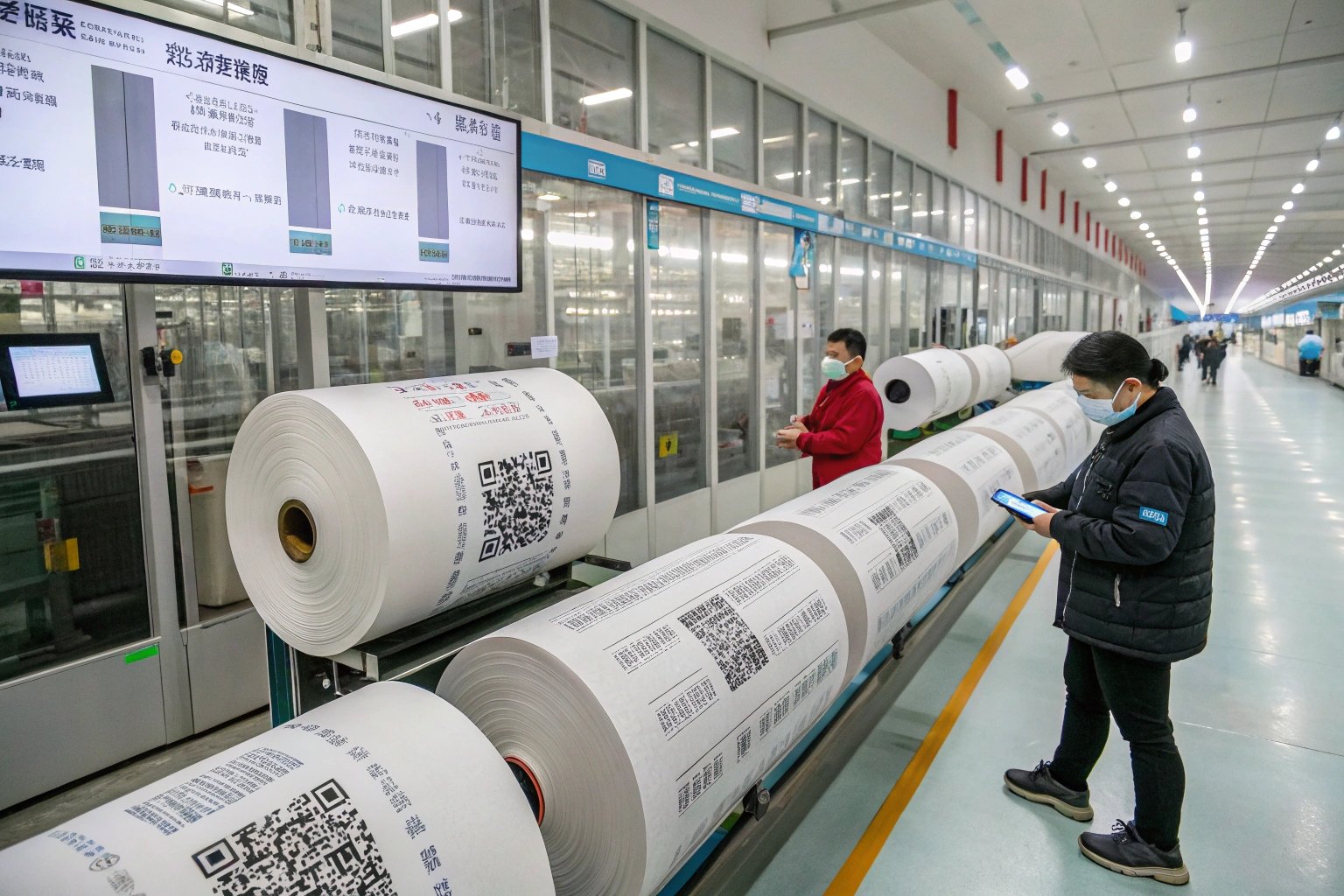Transparency in the textile supply chain is no longer a luxury—it's a necessity. Buyers want to know not just what the fabric is, but where it came from, how it was made, and if it meets safety and environmental standards. In our factory, we’ve found that the simplest solution with the biggest impact is also the most scannable: the QR code.
QR code tracking enhances fabric transparency by providing instant access to verified information about origin, composition, compliance, and batch data—bridging the gap between suppliers and buyers in real time.
Here’s how QR codes are transforming textile sourcing and building trust with global clients from Europe to the U.S.
What Key Data Can QR Codes Deliver to Buyers?
Buyers today want fabric data at their fingertips—not buried in spreadsheets or hidden in factories. QR codes offer instant visibility into every critical detail.
A single scan of a QR code on a fabric roll can unlock composition, fiber origin, dye lot, test reports, certifications, and even shrinkage or safety data.
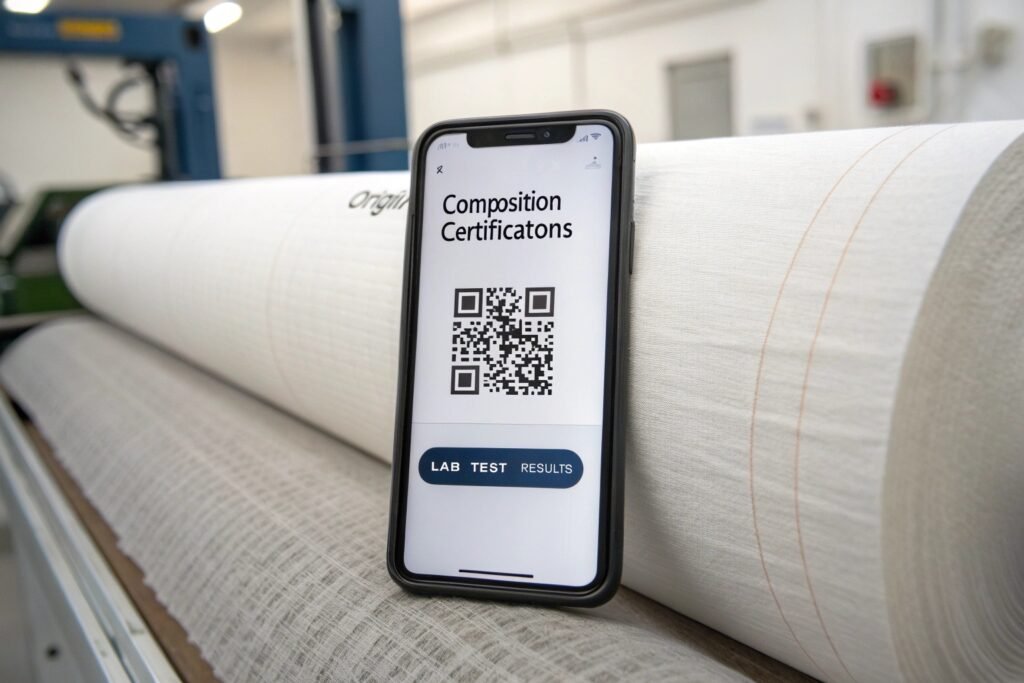
What Specific Information Can Be Stored?
Here’s what our QR labels include at Fumao:
- Fiber origin (e.g. GOTS-certified cotton, recycled PET source)
- Yarn count and weave structure
- Dyeing details (e.g. pigment vs. reactive, APEO-free)
- Lab test results (colorfastness, pH, formaldehyde)
- Compliance certificates (GOTS, OEKO-TEX, GRS)
- Date of production and factory line ID
Each tag is tied to a secure internal system, so no two rolls are the same—and all data is traceable by batch number.
Why Does This Matter for Export Clients?
Our EU clients often face:
- Customs inspections needing batch-level proof
- Traceability requirements under CSRD and ESPR
- Retailers requiring transparent labeling
With QR-linked transparency, buyers no longer need to email five people to check test results—they scan, verify, and go.
How Does QR Tracking Strengthen Compliance?
Regulatory compliance is serious business—especially in Europe. And traditional tracking systems aren’t fast enough. QR tracking solves this with built-in data layers.
QR code tracking provides real-time access to compliance documentation, test results, and audit logs—ensuring both suppliers and buyers stay on the right side of the law.
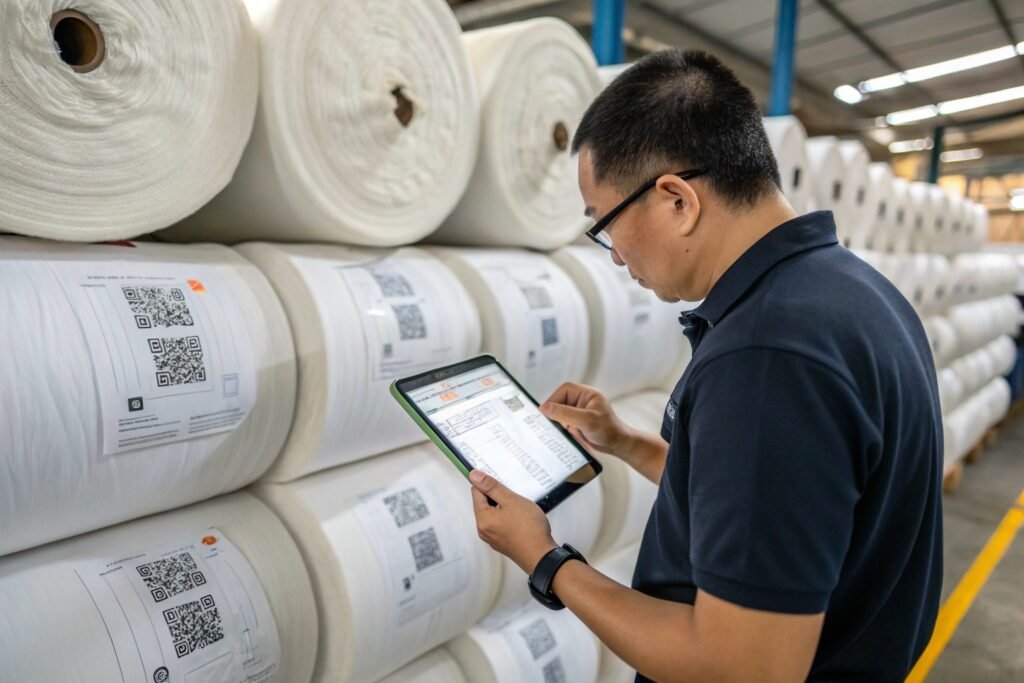
What Certifications Can Be Linked Through QR Codes?
At Fumao, our QR tracking supports:
- GOTS & GRS certificates (PDF download)
- OEKO-TEX Class I results for babywear
- REACH conformity statements for chemicals
- CNAS lab test reports (shrinkage, colorfastness, pH)
- CPSIA certificates for U.S. clients
Each QR leads to cloud-stored, batch-specific documents—reducing reliance on spreadsheets or email trails.
How Does It Help in Government or Brand Audits?
When inspectors or brand auditors visit:
- They scan a code on the roll
- View matching documentation instantly
- Cross-check test data without delays
This shortens audit times and builds confidence. Several EU clients have told us QR access helped them pass retailer compliance checks faster than ever.
How Does QR Transparency Build Buyer Trust?
Transparency builds confidence—and confidence drives orders. QR tracking turns abstract fabric claims into verifiable truth, increasing buyer satisfaction and reorders.
QR code transparency strengthens supplier–buyer relationships by proving product claims and reducing miscommunication, delays, or disputes.
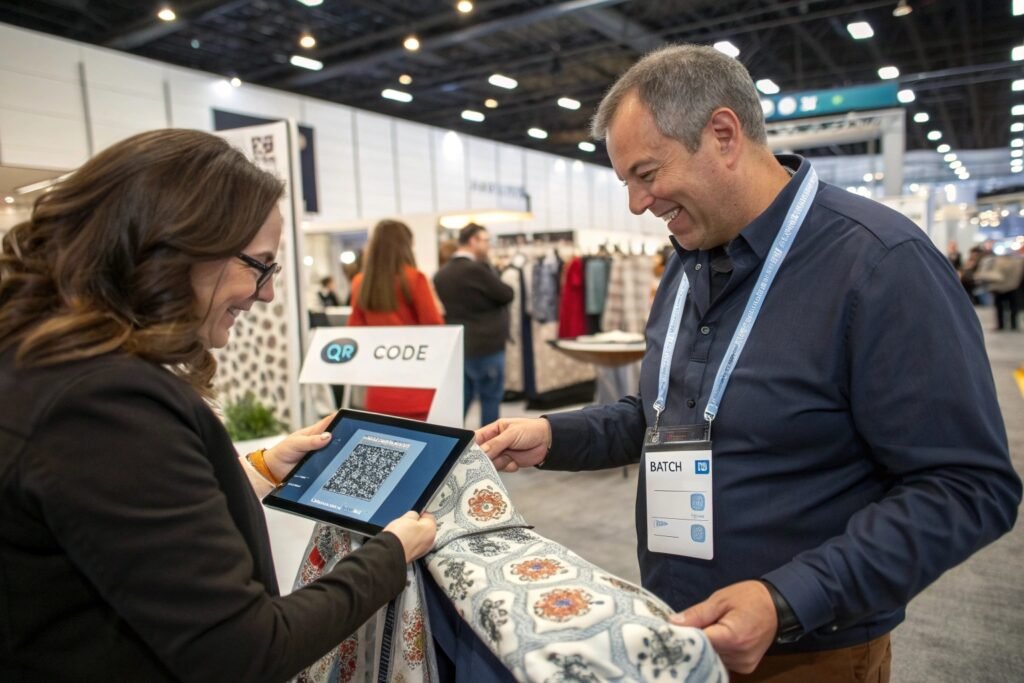
What Trust Issues Does QR Tracking Solve?
- “Are you sure this is organic cotton?” → Scan the origin cert
- “Is this the same as the approved sample?” → Check dye lot & spec
- “Will this pass our warehouse QC?” → Review lab test before delivery
This level of clarity removes guesswork, speeds up approvals, and helps brands avoid recalls or reworks.
How Do Buyers React to QR-Labeled Rolls?
Buyers have told us:
- “We scan rolls in our EU warehouse now before unpacking.”
- “It’s the fastest way to onboard new vendors with documentation.”
- “We show QR-linked sustainability claims to our end customers.”
One U.S. activewear brand even used QR-linked traceability in a marketing campaign to tell their factory-to-shelf story.
How Can You Implement QR Code Tracking?
You don’t need to be a tech giant to use QR tracking. A smart system and good discipline go a long way.
To implement QR code tracking, fabric suppliers need digital data management, accurate production logs, and a system that links physical rolls with cloud records.
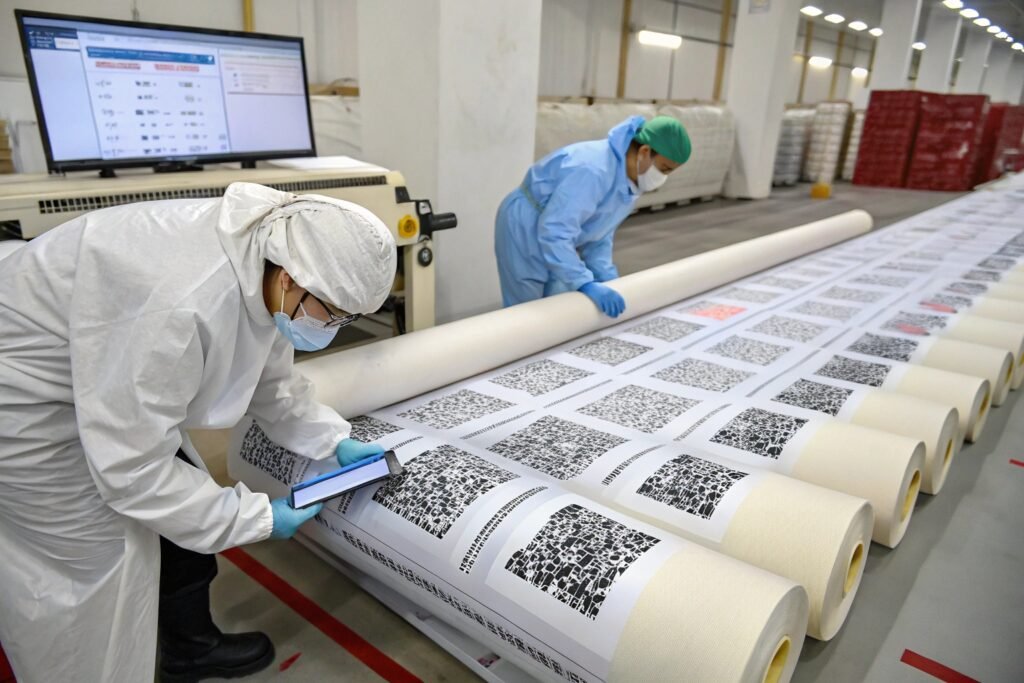
What Are the Steps to Build a QR System?
- Create unique batch IDs tied to physical production
- Digitize lab tests and certificates (PDF or system-generated)
- Assign QR code to each roll, embedding batch ID
- Store all data in a secure cloud system
- Train staff to scan and verify before packing
At Fumao, we built our system in-house with support from a local ERP provider. It’s now used across our dyeing, weaving, and QC teams.
What Are the Long-Term Benefits?
- Fewer customer claims or mix-ups
- Faster customs clearance
- Higher customer retention due to professionalism
- Easier handover between sourcing teams
Over 80% of our returning clients say QR tracking is now one of the main reasons they choose to reorder from us.
Conclusion
In a world demanding real-time data, QR code tracking has become essential for transparency in fabric sourcing. It simplifies compliance, builds trust, and reduces risk—for both buyers and manufacturers.
At Fumao, we don’t just offer great fabrics. We offer clarity, backed by QR-enabled traceability. Whether you need OEKO-TEX babywear knits or GRS-certified outerwear twill, we make sure you don’t just get what you ordered—you get proof of it.

